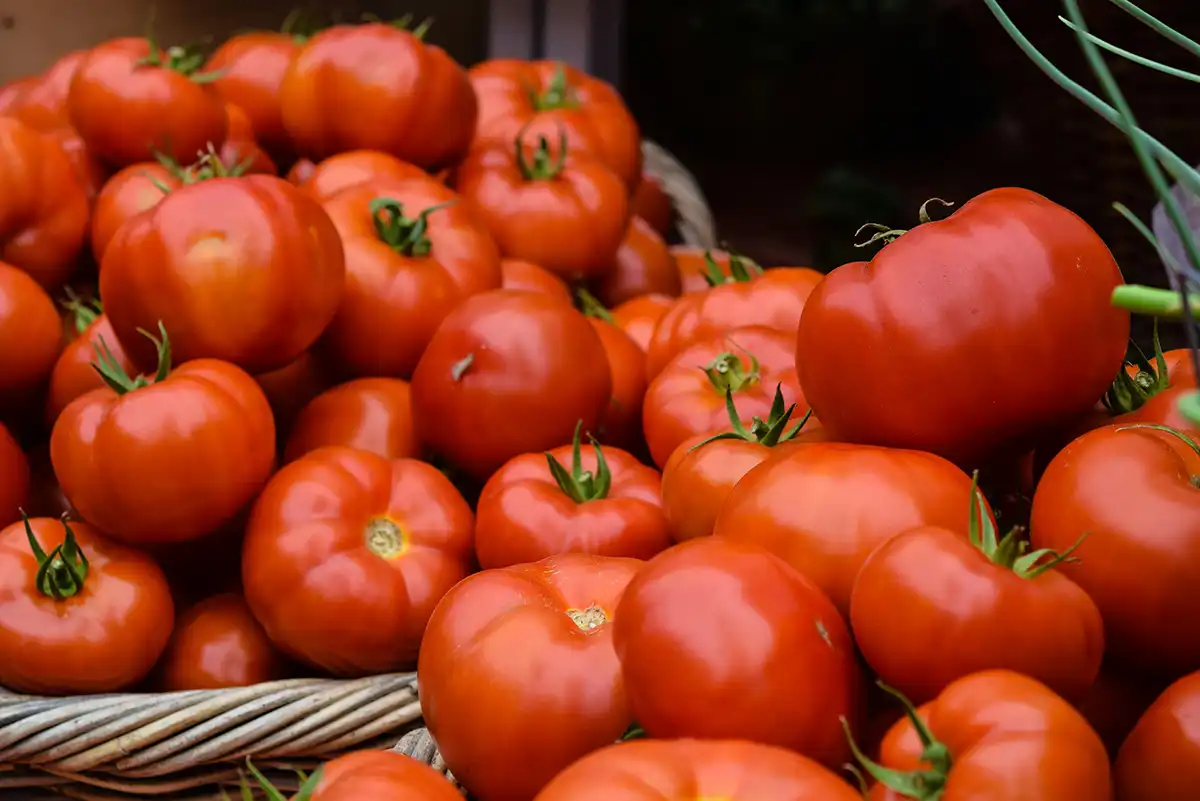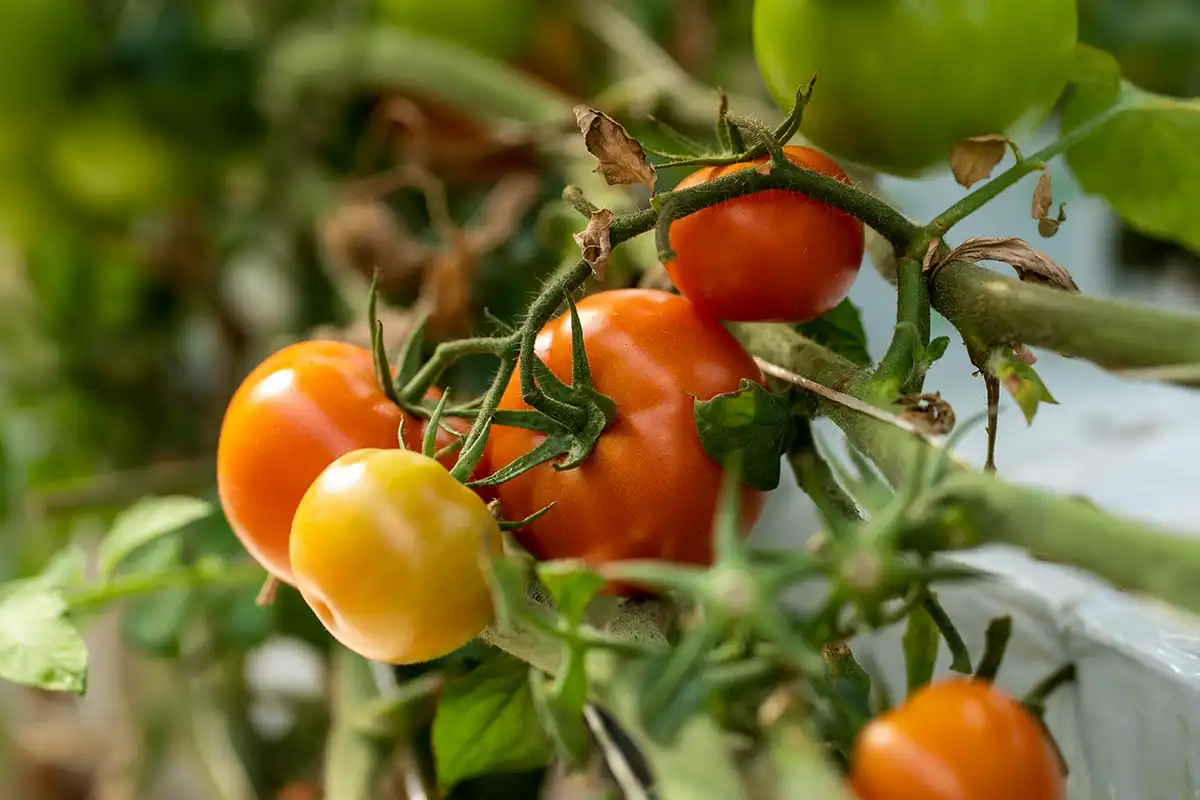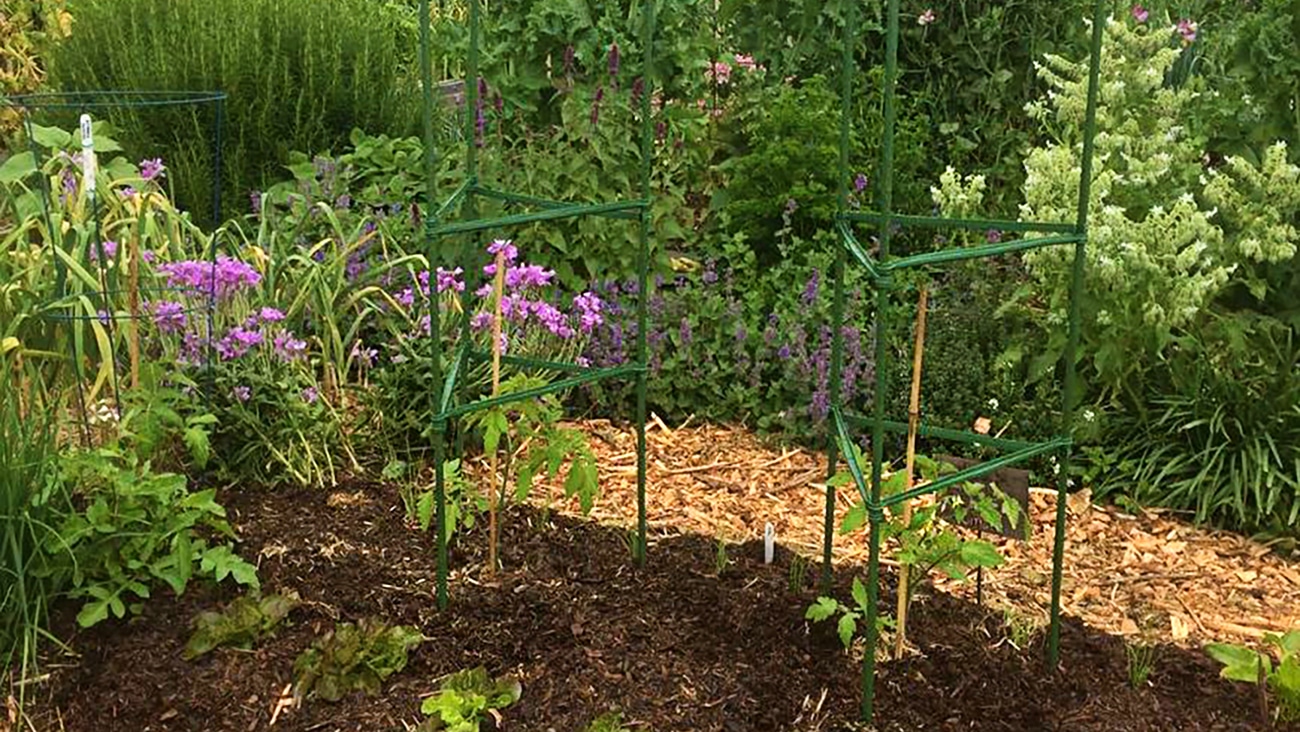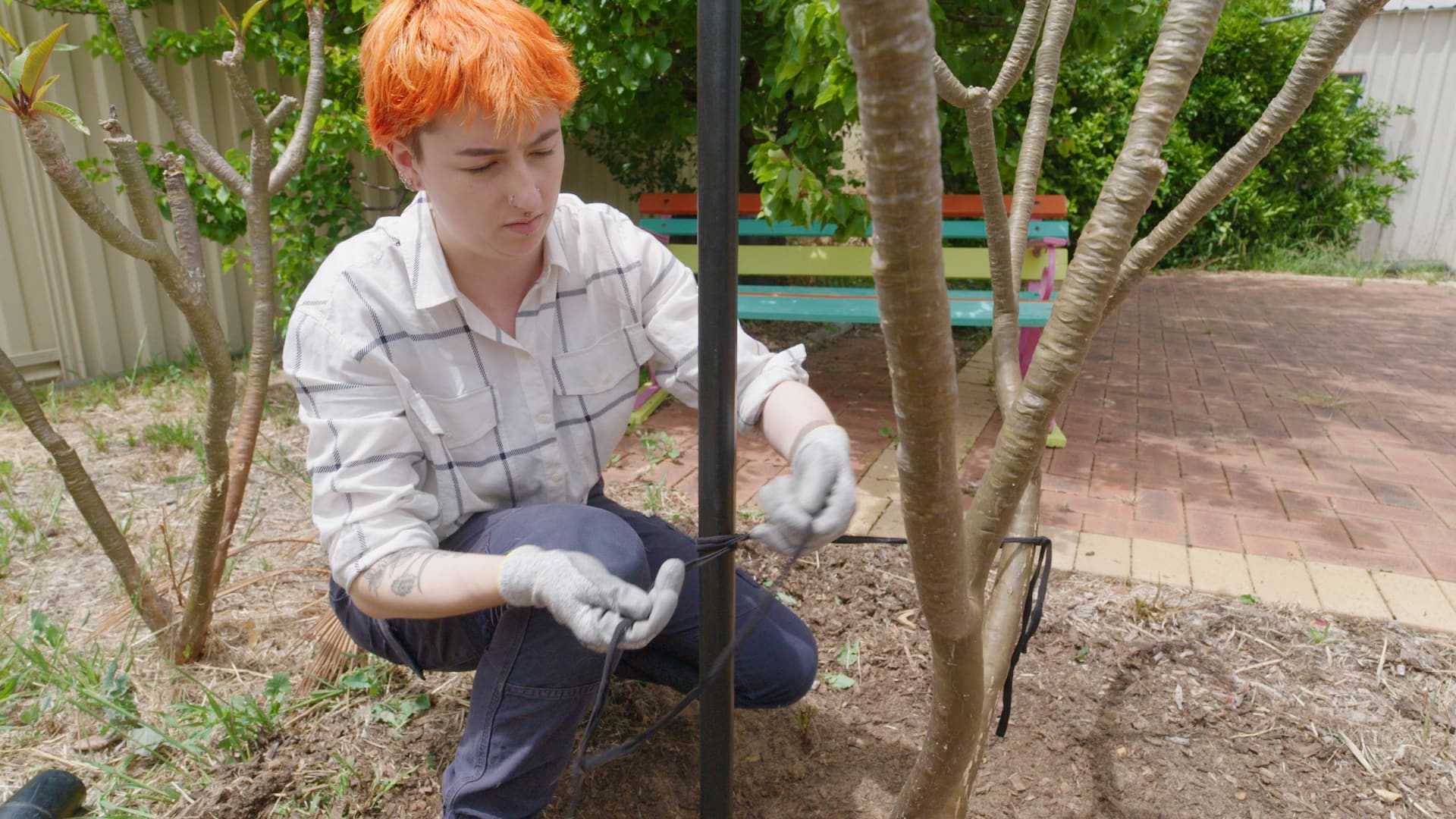Inspiration & Advice
Your sweet guide to tomato cages and stakes

You say tamato, I say tomato. However you pronounce it, this delicious, juicy fruit is the most popular edible you can grow at home.
And, yes, before the argument starts, it is a fruit— it forms from a flower and contains seeds. But it’s often used like a vegie!
If you’ve been thinking about growing these red balls of goodness in your backyard or on your balcony, Jack’s here to help with one of the most important aspects of successful cultivation: vegie trainers in the form of tomato cages and stakes.
Without their support, your plants will flop, fall on the ground, and you can kiss your harvest goodbye. But before we dig into the details, let’s learn a little more about growing your own toms.

Easy to grow—and good for you
Even if you’re a newbie to vegie gardens, tomato plants are easy peasy to grow and very productive. You can grow them outdoors, indoors, in pots, raised beds or in the ground, and at different times of year. They’re not fussy.
Tomatoes are not only fantastically flavourful, but they’re also nutritious; they’re a great source of vitamin C, potassium, folate and vitamin K.
Plus, they’re so versatile. You can eat them raw off the plant or in salads, or cook them up into salsas, sauces, soups, pies, pastas, stews and even breads.

Pick the perfect tomato plant
Before we get to staking and caging, you first need to pick the perfect tomato plant. There are so many different varieties it can be hard to know where to start, right?
Well, here are some of the best to grow as a beginner:
- Cherry tomatoes – Small, sweet and delicious to pop in your mouth as a snack straight form the vine. Fast growing.
- Roma tomatoes – A plum-shaped mini that’s great for cooking and canning. The ultimate sauce tomato.
- Heirloom tomatoes – Apricot-sized, super tasty and great for salads.
- Apollo tomatoes – A round, medium-sized, sweet tomato that grows abundantly. Great in salads.
- Grosse Lisse tomatoes – Meaning large and smooth, this variety is reliable, hardy and perfect for sangas.
- Mighty Red tomatoes – Sweet and juicy with a slight tang, these toms are great in all sorts of dishes.
- Grape tomatoes – Small, grape-like (obviously!) and fast-growing; eat them whole or dice them up for garnish.
Tomato seeds versus plantlings
Wondering whether you should sow your tomatoes from seed or grab yourself some perky plantlings? Both options have their pros and cons:
Why seeds?
- Budget-friendly – A pack of seeds is only a few dollars or even free when you save them from your first batch to replant next year.
- Greater variety – Stores typically offer a large range of tomato seeds but are more selective when it comes to the plantlings they sell.
- Growing satisfaction – Cultivating toms from seed is rewarding and really puts your green thumb to work.
Why plantlings?
- Speedier harvest – With the seeds already sprouted, you’ll be able to enjoy those delicious home-grown toms sooner.
- Easier to grow – You get to skip the tricky germination stage, which demands careful nurturing in controlled conditions.
- Fewer failures – Plantlings are already well-established and less prone to early setbacks once relocated.

Find a spot for a fruitful harvest
While each tomato plant variety enjoys slightly different conditions and planting seasons, all love to bask in the sun. So, pick a spot that gets at least 6-8 hours of direct sunlight a day. This gives them the energy they need to fruit.
In addition to sun, tomatoes also need:
- Well-drained, fertile soil – Raised beds or containers filled with rich organic soil are a great option for growing toms, especially if your soil tends to hold water.
- Shelter from the wind – Even with stakes or cages, strong gusts can damage your growing tomato plants and cause them to topple over.
- Good air circulation – Good airflow stops diseases like blight, so pick a spot where they can breathe. Plus, don’t plant them too close together.
What’s blight?
Blight is a nasty plant disease caused by fungi or bacteria. Symptoms include brown and yellow spots on the leaves, withering and decay. It’s a killer if not treated quickly.

Tomato staking and caging
Your tomato plants should be staked or caged when they are around 15 to 30 cm tall. But what’s the difference between these two types of support? Which should you choose? And how do you use them? We’re glad you asked…

Tomato stakes: the singular support stick
What is a tomato stake?
A tomato plant stake is a single, vertical pole or, you guessed it, stake! It’s typically made of wood, metal or plastic. Check out our Jack Garden Stake Range.
Why use a tomato stake?
Tomato stakes are great for offering upright stem support for lighter, vining tomato varieties like cherry, grape, heirloom and Apollo. They’re also compact, so they’re perfect if you’re tight on growing space or using containers.
How do I stake tomatoes?
Wondering how to stake tomatoes? Staking is super easy:
- Start by choosing a stake about 1.5 to 2 metres tall.
- Place it about 5-10 cm from the base of the plant and push it into the soil.
- As the plant grows, tie it gently to the stake with soft twine or garden ties, making sure it’s not too tight. Prune any suckers and lower leaves to help vertical growth and airflow.
- Keep checking to make sure your plant is secure, and adjust ties as it grows.

What is a tomato cage?
A tomato cage is a round or cylindrical frame made of wire or metal, see our Wire Tomato Cages and Knockdown Tomato Cages. They’re shaped like a little tower that goes around your tomato plants and let them grow through the gaps.
Why use a tomato cage?
Tomato cages are best for heavy and bushy tomato varieties like Roma, Grosse Lisse and Mighty Red as they offer more support. Cages are easier to maintain than stakes as they don’t have twines to tweak. They also keep growth contained.
How do I cage tomatoes?
How do you use a tomato cage? They’re simple to set up:
- Place the cage around your young tomato plant when it’s about 15–20 cm tall.
- Make sure the cage is pushed firmly into the soil for stability as the plant grows.
- As the plant gets taller, gently guide the stems through the openings in the cage. This will help support the plant and keep it from sprawling.
- Check often to ensure the plant stays in its cage, and prune as needed.
Whether you opt for stakes or choose cages depends on the type of tomatoes you’re growing, where you’re planting them, and how much stem fiddling you want to do. Take your pick!
Harvesting those juicy red jewels
Once your tomato plants are planted and supported by stakes or cages in their final growing spot, it can take 60 to 100 days for them to flower, pop out baby toms and, ripen from green to vibrant red and harvest ready.
Handy Jack tip
Make sure you take good care of your tomato plants as they grow. This means watering regularly, pruning for airflow and feeding with a balanced fertiliser often. Once a week when they’re flowering/fruiting and about every two weeks otherwise.
Once they’re fully coloured and slightly firm, not hard—do a squeeze test—you can carefully pick them by holding them gently and twisting them until they snap off the vine. Alternatively, snip them off with garden scissors or pruners.
If possible, pick them first thing in the morning when they’re at their freshest and enjoy raw, cooked or however you like them!
See also:
How to master growing tasty tomatoes home (Part 1)
How to master growing tasty tomatoes home (Part 2)
Grab your stakes or cages and get growing!
Staking and caging are the secret sauce to happy tomatoes—keeping them supported, off the ground, breezy (good air flow), and super simple to harvest! So head to your local store to pick up your Jack supplies.
Tomatoes growing strong thanks to the right support? Why not take some snaps and share them on socials, tagging @meetdiyjack? You might get some kudos or a share from us!